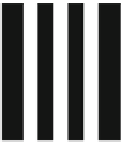Biomedical Engineering Reference
In-Depth Information
a
b
c
FB
SF
FB
L
L
L
SF
GRIN
LP
L
LP
L
LP/NF
L
BP
GRIN
GRIN
DM
L
L
BP
M
GRIN
M
CPC
d
e
SF
FB
EF
L
L
CF
LP
BP
SP
LP
DM
M
BL
2 mm
1.75 mm
BL
Fig. 1.17
Fiber-based Raman probes for different applications (Reproduced with permission from
various sources. See text for details) (a) GRIN lens-based Raman probe for highly scattering
medium, (b) Raman probe for glucose monitoring, (c) Raman probe for cervical cancer diagnosis,
(d) Raman probe for cervical cancer diagnosis, (e) Raman probe for breast cancer diagnosis.
GRIN
GRIN lens, L lens,
LP
long-pass filter,
BP
band-pass filter,
SF
single fiber,
FB
fiber bundle,
DM
dichroic mirror,
NF
notch filter, M reflective mirror,
CPC
compound parabolic concentrator,
BL
ball lens,
EF
excitation fiber,
CF
collection fiber,
SP
short-pass filter
A similar ball-lens-based Raman probe was shown in Fig.
1.17
e, which was
developed by Motz et al. [
46
] for breast cancer diagnosis. The central fiber (200-m
core diameter, NA
D
0:22) was used for excitation. The surrounding 15 fibers
(200-m core diameter, NA
D
0:27) were used for signal collection. There were
two filters between the fiber tip and the ball lens. The central rodlike short-pass
filter was used to reject Raman and fluorescence signal from the fiber, and the other
tubelike long-pass filter was used to reject the elastically scattered laser light. There
was a metal sleeve between the two filters to prevent cross talk. The total size of the
probe was 1.75 mm in outer diameter.
Shim et al. [
47
] developed an endoscopic probe for colon cancer diagnosis,
similar to the ball-based probe (Fig.
1.17
e). They were using beveled fiber rather
than ball lens to improve the collection efficiency. The probe consisted of a single
fiber (400-m core diameter) for excitation, surrounded by seven single fibers









































































































Search WWH ::

Custom Search